READY TO GET STARTED?
REQUEST A FREE ESTIMATE
Fill out the form below or call (888) 466-7849 for a free, no-obligation estimate.

If you live in the south, chances are you’ve been bitten by a bug you can’t even see, leaving you with an itchy, red rash. Chiggers, AKA red bugs, are known scientifically as trombiculid mites. These pests aren’t even technically bugs – they’re actually arachnids and related to spiders and ticks.
Chiggers are found in every country around the world. They prefer environments that are moist and grassy, such as fields, forests, berry patches, and lawns. They are tiny and can usually only be seen with a microscope. Adults are 1/60″ in length and have 8 legs. Larvae are smaller, usually less than 1/50″ and are wingless and red with 6 legs. The larvae will turn yellow after eating. Chiggers are common in late spring, summer, and early fall. They are active when temperatures are between 77 and 86 degrees Fahrenheit and will die off when temperatures drop below 42.
Adult chiggers don’t bite. The larvae will hatch and then clump together on leaves and grass. As you walk through these areas, they attach to you. They then crawl around until they find bare skin and use their claws to make tiny holes in your skin. They inject saliva into the hole that turns your skin cells into mush which they then eat, leaving you with an itchy, red rash. They can bite anywhere on your body but will typically cluster around legs or waists.
Chiggers don’t spread disease to humans but scratching the rash can lead to infection.
Because they’re so hard to see, it can be difficult to even realize you have a problem with them until after you’ve already been bitten. Prevent chigger bites by:
If you have a problem with chiggers or any other pests this summer, contact your local pest control company for an inspection and appropriate treatment plan.
How to Care for Your Crawlspace
Signs of A Centipede Infestation
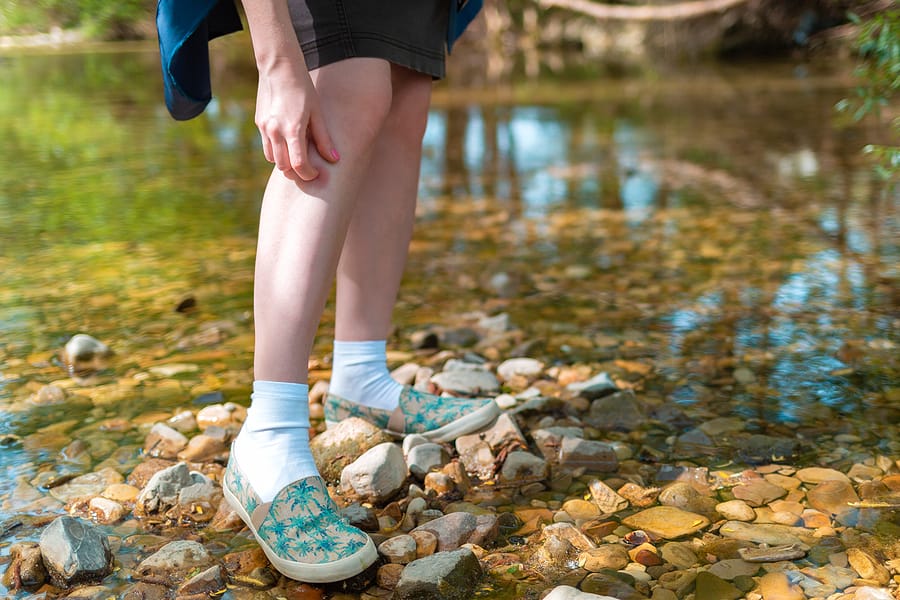
Chiggers, also known as red bugs, trombiculid mites, harvest mites, harvest bugs, harvest lice, mower’s mites, and berry bugs, are tiny red bugs that leave a big itch in their wake. These pests, classified as arachnids, aren’t dangerous but can be quite a nuisance if you get bitten. So what are those little red bugs and how can you avoid them this summer? Here’s everything you need to know about chiggers and how to prevent them.
Chiggers are tiny, about 0.3 mm in length. They are barely visible to the naked eye and often have to be seen with a magnifying glass. They can be red, orange, yellow, or straw colored. Juveniles (larva) have 6 legs while adults have 8. They are often visible once they congregate in clumps on the skin.
Chiggers can be found in every country worldwide but there are only 2 species in North America that are bothersome to humans with the most common one being Trombicula irritans. Chiggers prefer moist, grassy areas like fields, forest, lawns, and moss. Chiggers are most active when temperatures are between 77 and 86 degrees Fahrenheit and die when the temperature drops below 42 degrees.
Adult chiggers don’t bite; larvae do. Once these babies hatch, they clump together in large groups and attach to animals and people as they walk by. They then crawl on their host until they can find a patch of skin to feed on. They don’t actually burrow into or remain inside the skin as is popularly believed. Instead, they use their jaw-like claws to make a tiny hole they inject saliva into. The saliva liquefies the skin cells, providing a meal for the chigger. The skin around the bite hardens, creating a feeding tube for the chigger called a stylostome. The jaws of chiggers are quite delicate and are best able to penetrate the skin where there are wrinkles or folds. They can latch anywhere onto the body but will most often cluster in areas around the ankles, groin, crotch, knees, armpits, and waist.
Chiggers don’t bite when the temperature is below 60 degrees Fahrenheit or above 99 degrees. Bites can often go undetected for 1 to 3 hours before itching begins. If undisturbed, chiggers will feed for several days. Pronounced itching is the most common symptom of chigger bites. This itching can last for several days. The area around the bite can also become red with a rash, hives, bumps, or blisters. Chiggers aren’t known to spread diseases in North America but scratching the bites can lead to irritation and infection if the skin is broken open. Chigger bites can take 1 to 2 weeks to heal.
While chigger bites aren’t dangerous, they can be a nuisance, especially if the itching is severe. After being outdoors, perform a full body check, using a magnifying glass to see better. Chiggers can be seen as tiny red dots either anchored into the skin or moving quickly across your body. Once you come indoors, take a bath or shower and scrub your skin with soap and water to remove any lingering bugs. Wash any clothes, blankets, or towels that were worn or used outside in hot water to kill any bugs that might still be hanging on. Treat your bites with over-the-counter anti-itch cream or ointment like menthol, calamine lotion, or hydrocortisone). If the itching gets too bad, try over-the-counter antihistamines (like Benadryl) and use cold compresses at the site of the bite.
Chiggers can usually be prevented by following the techniques above. If you suspect you have a problem with chiggers or any other pest, contact a professional pest control company who can provide you with the most current and appropriate treatment and prevention options for you.
Wildlife: Leaving a Mess Behind
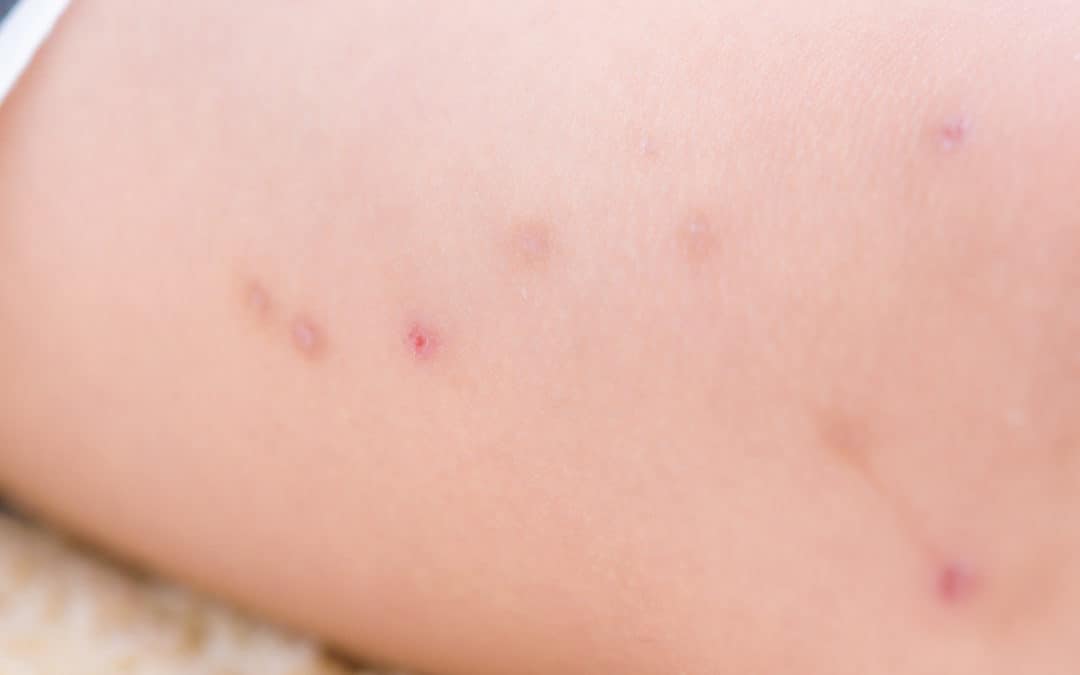
Summertime for most families means more time outdoors: exploring local parks, hiking mountains, kayaking down rivers, or simply lounging in your backyard. While these activities are fun for everyone, you can expose yourself to pests that like to bite. Fleas, ticks, and chiggers can be considered small, annoying, and hard to spot! Let’s break down the difference between all three of these parasites and some tips on bite prevention.
Fleas
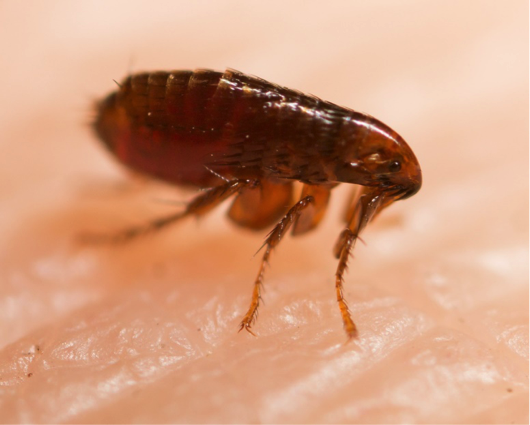
Small and wingless, fleas are dark reddish-brown in color and are only 1/8 of an inch long. Fleas can be found in almost any environment, but they are most active in warm, humid temperatures. While these pests feed on warm-blooded bodies, including humans, they do prefer to dine on hairy animals such as dogs, cats, rats, opossums, and more. Fleas are extremely hard to spot since they move so fast to a warm-blooded body.
Fleas can jump up to 8 inches high and 13 inches horizontally. This means that they can jump 150 times their own height, making finding a host to feed on very easy. Flea bites can be small, red, itchy spots on the skin. If the spot is scratched or irritated, it can begin to bleed.
Ticks
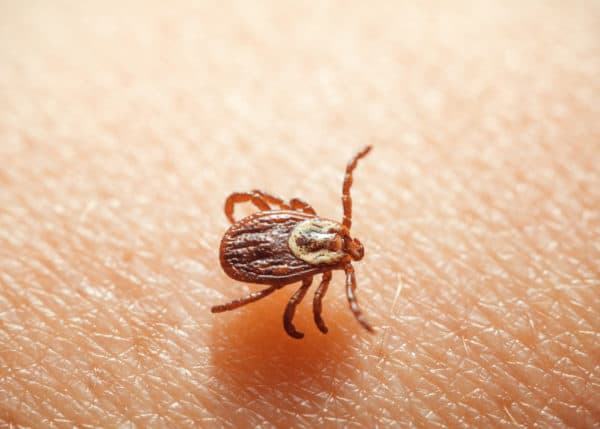
Ticks are orange-brown with dark legs and have a flat oval shape for a body. At a length of 1/8 of an inch, adult ticks actually have 8 legs and two body segments, making them an arachnid and not an insect. Ticks live in low-lying areas such as grass, shrubs, and bushes. These pests need blood to survive and will therefore feed on humans, squirrels, raccoons, birds, dogs, and more.
When ticks bite their host, it can cause irritation, an allergic reaction, and mouth parts can even remain in the host’s skin. Ticks are considered dangerous as they are known to transfer Lyme disease, anaplasmosis, and babesiosis.
Chiggers
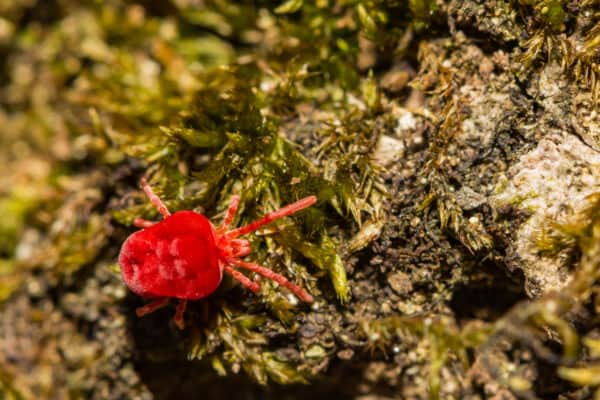
Sometimes referred to as mites or red bugs, chiggers are extremely small and difficult to spot. Red, orange, yellow or straw-colored, these arachnids are no more than .3 millimeters long. Chiggers can be found in areas of wood and grass, near lakes, ponds, streams, and rivers.
While they don’t pose a serious health risk, they can leave behind an uncomfortable rash after a bite that you’ll want to scratch. Chigger bites are most common in the late spring, summer, and early fall.
It’s important to take precautions if you know you and your family will be in areas where fleas, ticks, and chiggers are present. Here are some things you can do to prevent bites from these pests:
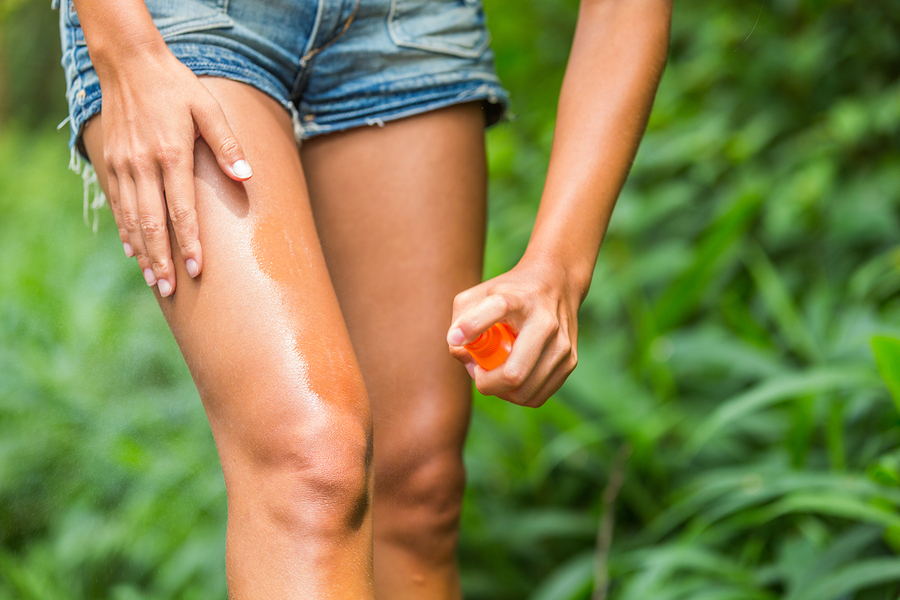
Summer is in full-swing here in Georgia, the heat is rising, and the bugs are coming out to play (bite!). Here are 5 common summer pests to be on the lookout for and tips on how to prevent and get rid of them:
Chiggers (sometimes referred to as mites or red bugs) are so small they’re hard to spot. But you’ll know you’ve been bitten after an itchy, uncomfortable rash develops. While they don’t pose serious health risks, they can ruin outdoor fun and leave behind irritated skin that you’ll want to scratch. To prevent chigger bites this summer, limit time spent in areas prone to chiggers – woods, grassy areas, near lakes, ponds, streams & rivers – keep arms and legs covered when outside, and wear insect repellent with DEET. If you get bitten by chiggers (most commonly on legs and waist with red, itchy skin), take a bath or shower immediately to get rid of chiggers that may remain on your body, wash the clothes you were wearing in hot water, and then apply a itch-relief lotion or ointment to the affected areas – like hydrocortisone or calamine.
Mosquito bites, on the other hand, can be more serious since they carry multiple diseases, viruses, and parasites. The best way to minimize your risk of contracting mosquito-born illnesses like Zika, encephalitis, West Nile, dengue fever, and malaria (some of the most common) is to prevent mosquito bites by limiting travel to well-known, affected areas, keeping arms and legs covered in light-colored, loose clothing when outdoors, wearing insect repellent with DEET and reapply often, and controlling mosquitoes around your home with professional mosquito treatments. You can also reduce mosquitoes by eliminating breeding sites – any areas with standing water.
Fire ants can be dangerous for the whole family, including pets. They’re aggressive and cause painful bites, often with severe allergic reactions, which can be especially harmful to small children and pets. The best way to prevent and control fire ants around your home is with regular yard treatments, specifically targeting fire ant mounds, by a professional exterminator. Treatments are usually applied in granular form and get rid of fire ants in as little as 72 hours.
Bees can be a threatening summer nuisance and often cause painful stings if threatened. One of the most common summer bees is a paper wasp. Paper wasps will form nests on or in almost any horizontal surface, resembling an umbrella attached by a small stem. They vary in color but can be brown and yellow striped or red with blackish wings. They’re most likely to sting when their nest is disturbed, which can happen accidentally when nests are hidden. Paper wasps can be highly aggressive and cause severe pain and allergic reactions so it’s recommended to leave nests undisturbed if posing no serious threat or contact a bee exterminator to access the situation.
Ticks are dangerous for both humans and animals as they spread infectious diseases – like Lyme disease and Rocky Mountain spotted fever, through bites. Take steps to protect yourself from tick bites while outdoors by avoiding areas where ticks are prevalent, like wooded areas and in tall grass, and use an insect repellent with DEET. You should also treat pets with tick repellent products to reduce their risk of tick bites.
Click here for tick removal tips from the CDC.
We know that bugs are gross and unsanitary but did you also know that they can be bad for our health. WebMD discusses some of the worst bugs and the potential harm they can do to our health:
Tips to prevent feeling the sting of these health issues:
For more information on these insects and their health hazards, visit WebMD: Bad Bugs Slideshow: Identifying Bugs and Their Bites.
If you think you may have been bitten or stung by any of the insects above, please take note of your body’s reaction and seek medical assistance immediately.